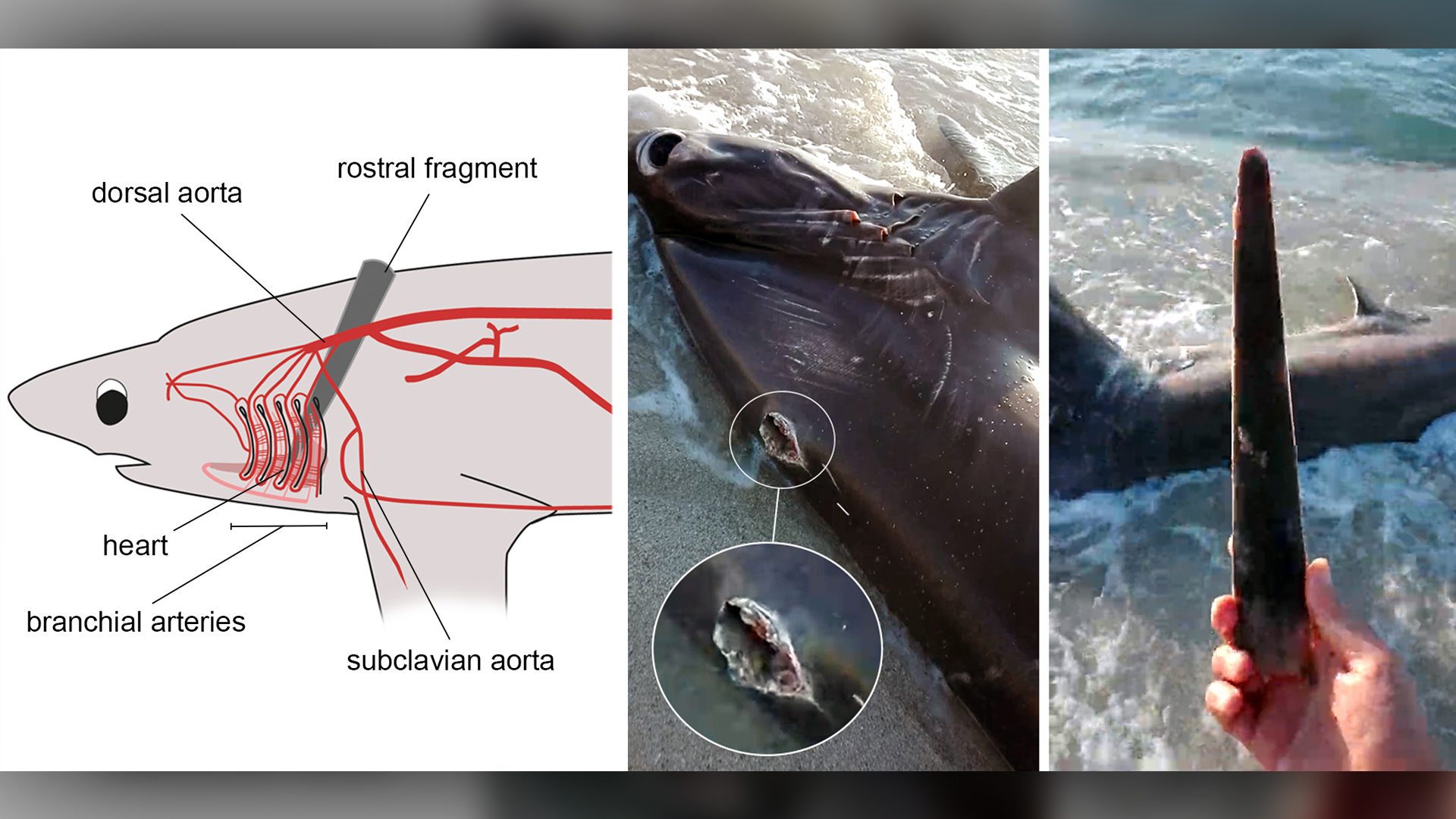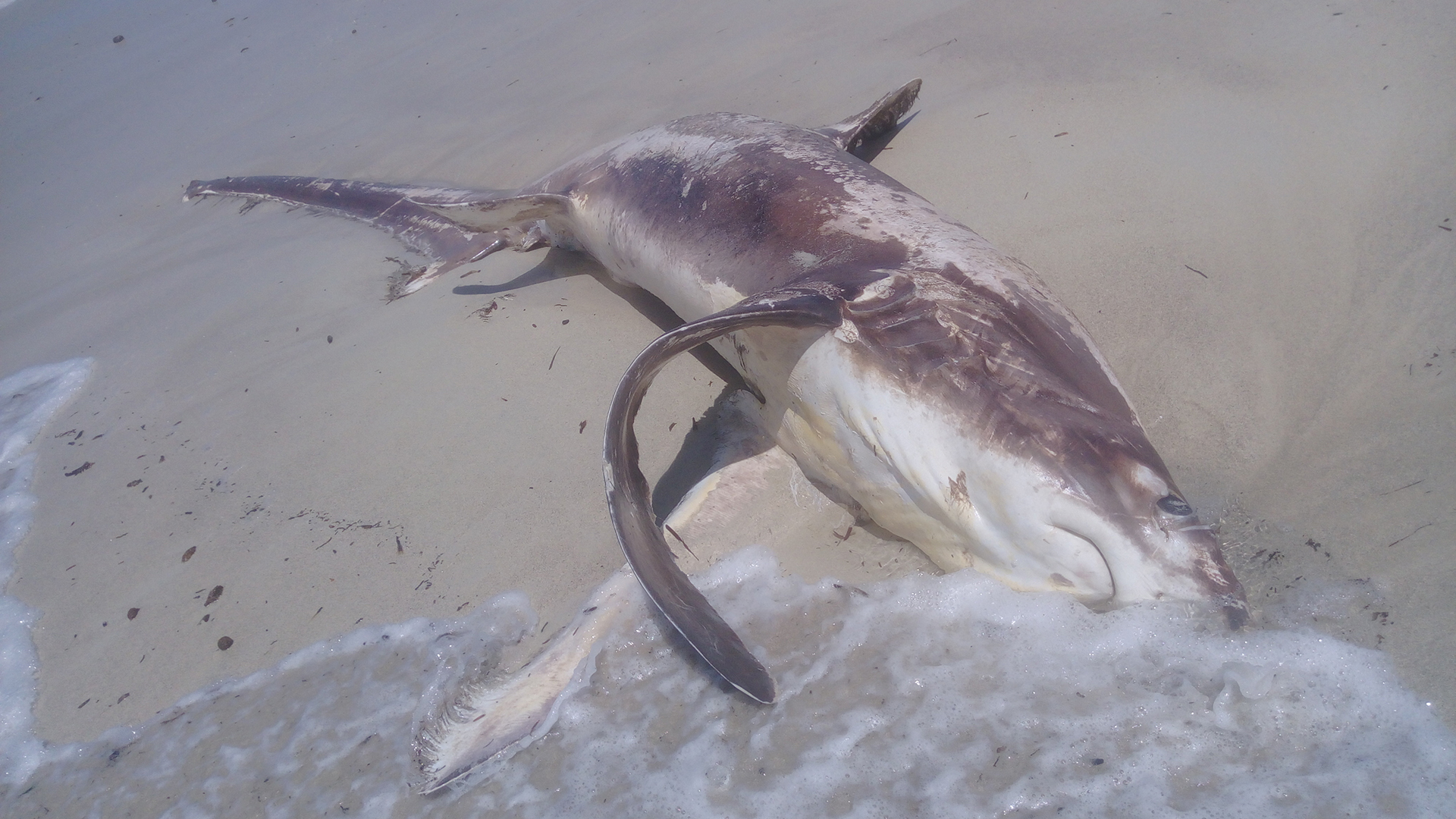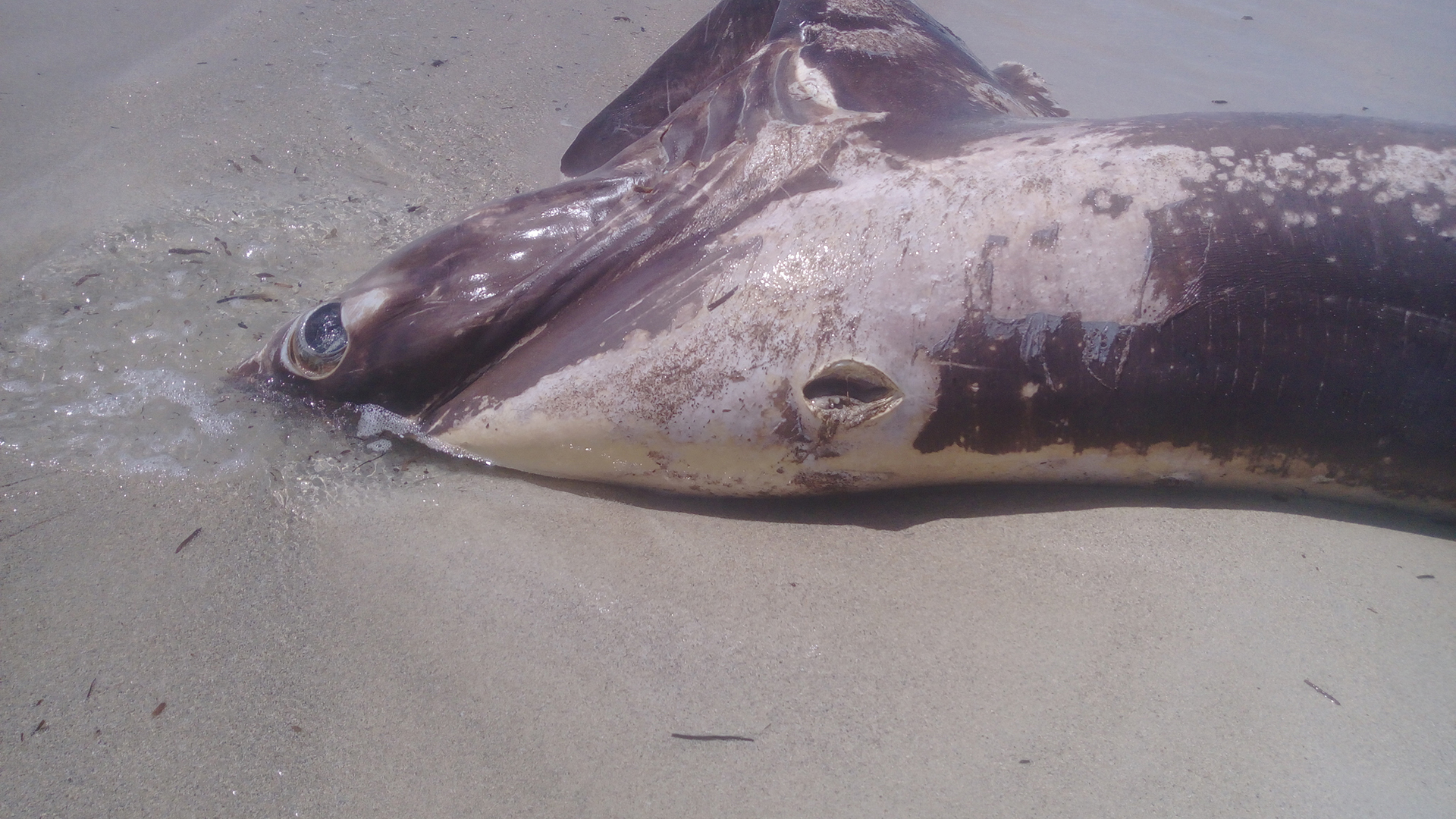Whodunit solved when 'sword' is found embedded in thresher shark
Swordfish are known to be very aggressive fish.

When a dead thresher shark washed up onshore, it was obvious what had killed it — a swordfish had stabbed it from behind and left a large hunk of its "sword" embedded in the beast, a new study finds.
No one saw the actual attack, so it's unclear why the swordfish jabbed the shark. But the two ocean predators may have been competing for prey, the researchers said.
"The most likely scenario is that both species were hunting on a school of fish or on squids in the deep," said study lead researcher Patrick Jambura, a doctoral student in the Department of Paleontology at the University of Vienna.
Related: 7 unanswered questions about sharks

It's also possible the two ocean predators were fighting over territory, or that the swordfish accidentally stabbed the thresher shark and left nearly 12 inches (30.1 centimeters) of its "sword" in the victim, he said.
News of the fight's deadly aftermath spread when the shark's body washed up on the Mediterranean coast of Libya, near the town of Brega in April 2020. A local citizen scientist group learned about photos and video taken of the 14.5-foot-long (4.5 meters) dead shark, and after seeing the evidence "I was just stunned for a few moments," Jambura told Live Science in an email. Swordfish (Xiphias gladius) are known to defend themselves against blue sharks (Prionace glauca) and mako sharks (Isurus oxyrinchus), as these sharks prey on swordfish.




Swordfish have also been reported attacking whales, sea turtles, inanimate objects, including boats and submarines, and even humans, Jambura and his colleagues wrote in the study. In 2015, "a diver was killed in Hawaii when he speared a small swordfish that had wandered into a marina," said Yannis Papastamatiou, a marine biologist at Florida International University, who was not involved in the study. "It speared him through the chest."
Get the world’s most fascinating discoveries delivered straight to your inbox.
But thresher sharks (Alopias superciliosus) eat small fish "and wouldn't be a threat" to swordfish, Jambura said.
Whatever the reason for the stabbing, "we know that the swordfish attacked from above — the shark was most likely not even aware of the danger [it] was in until it was too late," Jambura said. It appears that the roughly 10-foot-long (3.1 m) swordfish stabbed the shark just behind the head, leaving a cut 2 inches (5 centimeters) deep and 3 inches (8 cm) wide where it pierced the shark's gill system. Because no one performed a necropsy (an animal autopsy), there's no way to know whether that caused deep internal damage, "but from the angle and the depth of penetration, it is safe to say that the gill region was heavily damaged, possibly also some important arteries," Jambura said.
While this is the first reported case of a swordfish killing a thresher shark, scientists don't know how often this happens in the water's depths. "We rarely see evidence of these outcomes: Sharks are negatively buoyant and will sink when they die," Papastamatiou told Live Science in an email. "Unless they wash up on the beach like here (which is rare, most will sink into the deep sea), then we won't find evidence of the interaction."
The swordfish left the altercation physically damaged, but that doesn't mean the fish died; there are known cases of billfish (a close relative of the swordfish) that have damaged, malformed or even missing rostra (or its pointy "sword") that "were apparently still in good physical shape," the researchers wrote in the study. Perhaps the assailant survived.
The study was published online Oct. 7 in the journal Ichthyological Research.
Originally published on Live Science.

Laura is the managing editor at Live Science. She also runs the archaeology section and the Life's Little Mysteries series. Her work has appeared in The New York Times, Scholastic, Popular Science and Spectrum, a site on autism research. She has won multiple awards from the Society of Professional Journalists and the Washington Newspaper Publishers Association for her reporting at a weekly newspaper near Seattle. Laura holds a bachelor's degree in English literature and psychology from Washington University in St. Louis and a master's degree in science writing from NYU.


